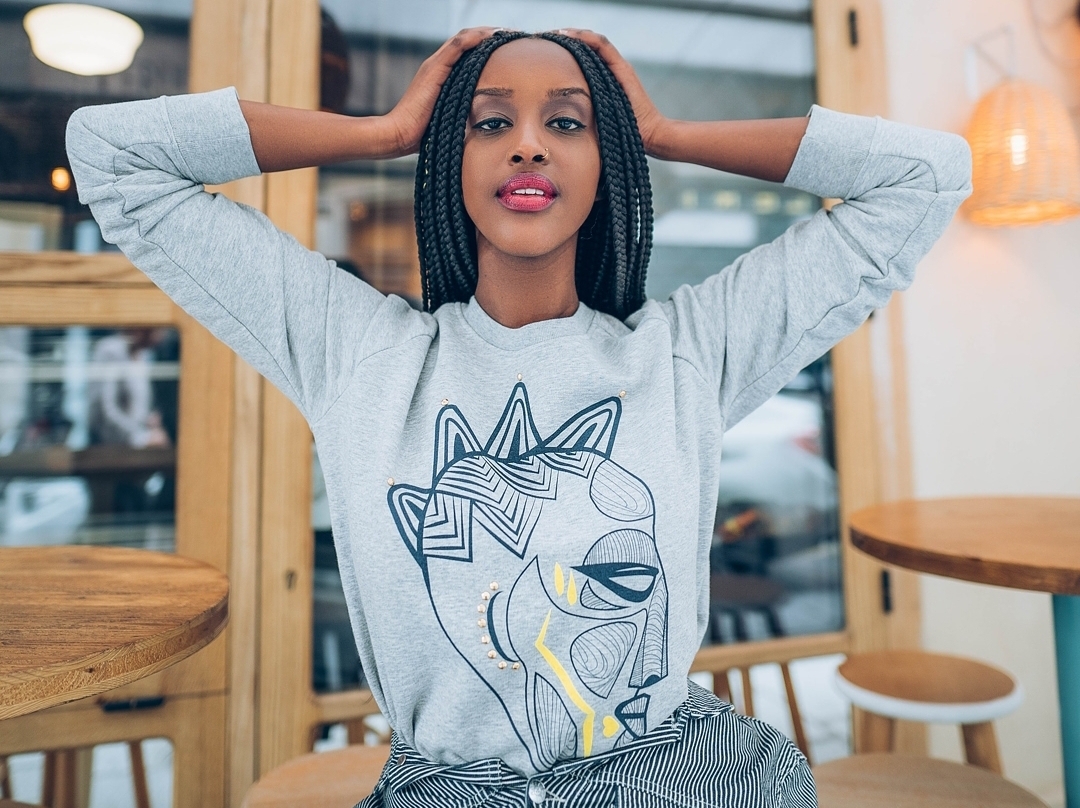How Branded Clothing Uses Fabric to Match Season and Occasion
How Branded Clothing Uses Fabric to Match Season and Occasion
Blog Article
Understanding Garments: The Significance of Material Selections in Your Wardrobe
The option of material in garments plays a pivotal role in both looks and capability. Various materials offer differing levels of sturdiness, comfort, and breathability, directly affecting the wearer's experience. Understanding these subtleties can boost one's closet noticeably. Many neglect exactly how these choices can affect not just individual style, yet additionally sustainability. What textile decisions could redefine your closet and straighten it with both style and responsibility?
The Duty of Fabric in vogue and Performance

Common Material Types and Their Features
When choosing garments, recognizing the qualities of common textile kinds is essential for making notified options. Cotton, a widely-used all-natural fiber, is understood for its convenience, softness, and breathability, making it suitable for informal wear and daily garments. Bed linen, an additional all-natural choice, boasts outstanding moisture-wicking homes and a distinctive appearance, ideal for cozy climates.Wool, commonly favored for its warmth and resilience, differs in fineness; merino woollen is soft against the skin, while coarser types are made use of for outerwear. Synthetic materials like polyester and nylon supply resilience and resistance to creases, making them prominent for activewear and traveling garments. Ultimately, blends, which combine all-natural and artificial fibers, can improve functionality while maintaining convenience. By identifying these textile characteristics, people can pick garments that lines up with their lifestyle and aesthetic preferences.
Breathability and Convenience: Choosing the Right Fabrics for Different Environments
Choosing the ideal materials for various environments can substantially improve convenience and general wearability. Breathable products are necessary in hot climates, as they permit air circulation and wetness dissipation. Fabrics such as cotton, bed linen, and moisture-wicking synthetics efficiently attract sweat far from the body, maintaining the wearer cool and dry. On the other hand, in chillier climates, thicker materials like woollen or fleece provide insulation while retaining breathability, guaranteeing heat without overheating.Additionally, the choice of textile weight plays an essential function; light-weight textiles are preferable for summer, whereas much heavier alternatives are fit for wintertime wear. Recognizing the one-of-a-kind properties of each material enables people to clothe properly for varying weather. Ultimately, choosing comfy and breathable materials tailored to particular environments can greatly enhance day-to-day convenience and enhance the general experience of using garments.
Durability and Treatment: Just How Textile Affects Durability of Your Wardrobe
Selecting the ideal materials can greatly affect the durability and care demands of a closet. Fabrics such as cotton and polyester are known for their resilience and simplicity of maintenance, making them ideal for everyday wear. In comparison, fragile materials like silk and shoelace call for more mindful handling and specialized cleansing approaches, which can increase the moment and initiative needed for care. Branded Clothing.Durability is also influenced by the fabric's weave and finish; tightly woven fabrics tend to stand up to damage much better than loosely woven choices. Furthermore, artificial blends commonly offer improved toughness, combining the most effective qualities of numerous fibers.Understanding the treatment directions for every textile is essential, as inappropriate drying out or washing can cause premature wear. Eventually, selecting resilient materials More about the author can lead to a longer-lasting wardrobe, lowering the regularity of replacements and contributing to an extra lasting style choice
The Impact of Textile on Fit and Shape

Sustainable Fabric Choices: Making Eco-Friendly Choices
The effect of textile extends beyond fit and silhouette to include ecological elements, triggering an expanding interest in lasting material options. Eco-friendly fabrics, such as organic cotton, hemp, and Tencel, are obtaining grip among consumers that focus on sustainability in their wardrobes. These products are typically created with fewer chemicals and water, minimizing their ecological footprint.Additionally, recycled textiles, made from post-consumer waste, supply an innovative remedy to the textile market's pollution issue. Brands increasingly accept openness in their sourcing techniques, permitting customers to make informed choices about their purchases.Choosing lasting materials not only sustains ethical practices yet additionally motivates the apparel industry to embrace even more responsible manufacturing approaches. As awareness of ecological problems climbs, individuals are urged to review the long-lasting effect of their fabric choices, cultivating an activity in the direction of a much more ecologically aware and sustainable approach to fashion.
Raising Design: Just How Fabric Can Change a Clothing
While numerous may concentrate on color and cut when choosing an outfit, the choice of material plays a crucial duty in raising design and enhancing overall appearance. Various products share distinctive moods and messages; as an example, silk exudes blog here luxury and sophistication, while jeans provides a laid-back, relaxed ambiance. The structure and drape of a material can substantially modify the shape, with organized textiles supplying a refined look and softer ones developing a much more fluid, relaxed aesthetic.Moreover, the weight of the fabric influences wearability throughout periods. Light-weight textiles like bed linen and cotton are suitable for summer season, while much heavier products such as wool and velvet supply warmth and beauty in colder months. Recognizing textile residential properties, such as breathability and stretch, likewise encourages people to make enlightened choices that enhance comfort without compromising style. Ultimately, the appropriate material can transform an outfit from ordinary to phenomenal, making it a vital consideration in any wardrobe.
Often Asked Inquiries
How Do I Identify the Material Material of My Clothes?
To recognize fabric material, one can analyze treatment labels, conduct burn examinations click to find out more for fiber recognition, or consult fabric swatches. These methods aid differentiate materials, making certain notified selections for clothing treatment and maintenance in day-to-day wear.
Can Textile Selection Affect My Mood or Confidence?
Fabric selection can significantly influence a person's mood and self-confidence. Branded Clothing. Particular materials might stimulate sensations of convenience or style, while others can feel limiting or uncomplimentary, eventually affecting self-perception and psychological health throughout the day
What Fabrics Are Best for Sensitive Skin?
For individuals with delicate skin, all-natural textiles like cotton, bed linen, and bamboo are typically advised. These materials are breathable, hypoallergenic, and much less likely to cause irritation, making them appropriate options for convenience and skin health.
Just how Do I Properly Wash and Look After Various Fabrics?
To properly care and clean for various textiles, one must consider each product's specific needs, including temperature level setups, cleaning agents, and drying out approaches, making certain durability and maintaining the material's initial top qualities for optimal use.
Exist Certain Fabrics for Athletic or Efficiency Use?
Sports or performance wear often makes use of materials such as spandex, polyester, and nylon. These products are made for moisture-wicking, breathability, and flexibility, improving activity and comfort during physical tasks while giving resilience and assistance. Conversely, in chillier climates, thicker fabrics like wool or fleece offer insulation while maintaining breathability, ensuring heat without overheating.Additionally, the choice of material weight plays a vital duty; lightweight materials are more effective for summer, whereas larger alternatives are fit for wintertime wear. In contrast, delicate products like silk and shoelace require more careful handling and specialized cleaning techniques, which can enhance the time and effort required for care.Durability is also influenced by the material's weave and surface; snugly woven materials tend to withstand wear and tear far better than loosely woven options. In contrast, inflexible textiles can limit motion however supply a timeless, polished look.Moreover, the density and texture of the textile can affect the visual understanding of body form. The effect of fabric prolongs beyond fit and shape to include environmental elements, prompting a growing interest in sustainable material selections. The structure and drape of a textile can dramatically alter the silhouette, with structured textiles providing a refined appearance and softer ones producing a much more fluid, relaxed aesthetic.Moreover, the weight of the textile affects wearability across seasons.
Report this page